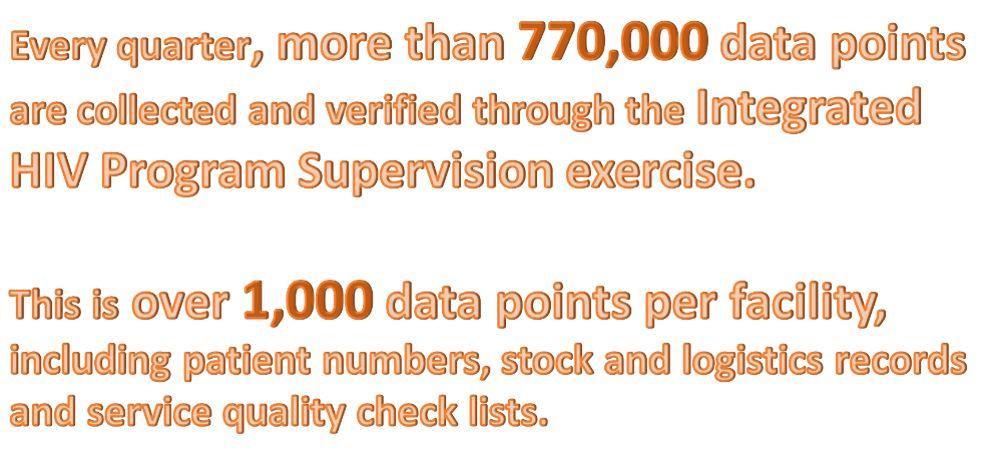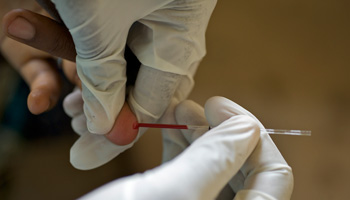The National HIV Program relies heavily on accurate and timely data for planning, reporting to donors and for drug procurement and distribution.
Data analysis and reporting is done from patient cards and clinic registers at most facilities, but electronic systems for monitoring are increasingly used at sites with many patients.
Over the last decade, Malawi has established and maintained an integrated M&E system for the HIV Programs that is built on quarterly supportive site supervision visits to all health facilities with HIV services (over 700). This system combines regular data verification and review of clinical notes from primary patient records with continuous quality improvement and targeted clinical mentoring. Site visits are coordinated by the HIV Department and carried out by district and zonal program staff, supported by implementing partners. Malawi’s standardized M&E tools and the Integrated HIV Program Report, which has been published without fail since 2005, have become an international benchmark for HIV Programs. External data quality audits have confirmed the highest ratings for completeness, accuracy and timeliness of data (2010 OSDV report).
The HIV Program has supported the developed of a national point-of-care electronic medical record (EMR) system. Development, deployment and maintenance of this system are carried out by an indigenous organization (Baobab Health Partnership) with PEPFAR funding support. About 30% of the national ART patient cohort is currently managed at EMR facilities. The TB and HIV Programs are currently working on a full integration of their strategic information and supervision systems. The HIV Program is currently exporting data to the District Health Information System, which serves as the central repository for MOH service data and a full integration of these systems is planned.

Supportive Site Supervision for HIV Services
Supervision teams are composed of: experienced HIV clinicians; nurses and M&E staff from health facilities in the public and private sector; district and zonal PMTCT and ART coordinators; program officers and technical staff from the Department for HIV and AIDS; technical staff from implementing partners.Each quarter, a one day pre-supervision meeting is organised for all supervisors participating in the upcoming round to share program updates, discuss observations from the previous round, distribute materials and organise logistics, transport and accommodation.
Standard supervision forms are used to guide implementation of the supervision protocol, to update site information and collect M&E reports. Custom forms with previous data for each site are printed from the HIV Department database. The supervision forms include:
- Contact details of HIV service providers at each site
- Quality of service checklist
- Follow up on action points noted during the previous visit
- Next visit date
- M&E reports from HTC, ANC, maternity, exposed child and pre-ART follow-up, ART and TB
- Physical drug stock-level assessment
- Identification of sites in urgent need of clinical mentoring
- Semi-structured feedback and performance rating for the supervision teams by facility staff
One copy of the supervision form is returned to the Department for HIV and AIDS, where data are entered in a custom MS Access database to produce national reports and to manage program logistics and the commodity supply chain. A second copy of the supervision form is left at the sites.
The supervision protocol includes a systematic review and verification of primary records (patient cards and registers) at all sites. This effectively provides a quarterly quality audit for M&E records, which has resulted in exceptional accuracy and completeness of HIV Program data in Malawi. At the same time, the systematic chart review helps to identify complex cases or deviations from clinical protocol, allowing the supervision team to provide targeted mentoring and clinical advice. The quarterly supervision exercise also aims to boost staff morale and motivation through Certificates of Excellence that are awarded by MOH to sites with an excellent score on the quality of service checklist. A growing number of health workers from sites all over the country participate as supervisors in this quarterly exercise and this has strengthened the national HIV Program identity and has greatly facilitated communication between program staff at the national, zonal, district and facility level.
Work-in-progress for supervision data visualization: DHAMIS-Analytics
